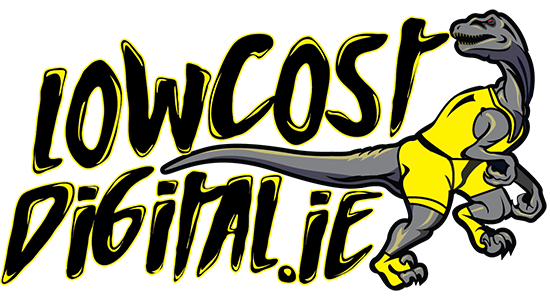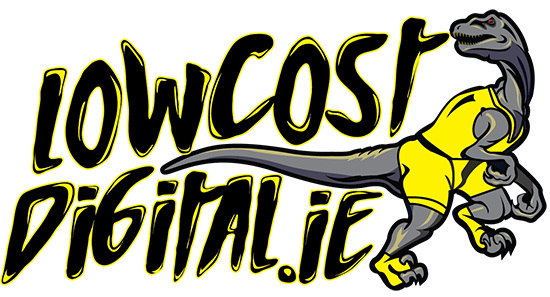Key Highlights
- Web design software is essential for beginners create visually appealing and functional.
- Website builders Wix and WordPress offer intuitive interfaces and customizable templates for easy website creation.
- Graphic design tools like Canva and GIMP make it easy for non-designers to create professional-looking graphics.
- Prototyping tools like Adobe XD and Figma help designers create interactive and user-friendly interfaces.
- User-friendly interfaces and a low learning curve are important factors to consider when choosing web design software.
- The best web design software for beginners should offer a wide range of features and customization options to meet diverse design needs.
Introduction
Web design software is an essential tool for beginners who want to create visually appealing and functional websites. Whether you’re a freelancer looking to build your own portfolio website or a small business owner wanting to establish an online presence, having the right web design software, such as Google Web Designer, a free web design software application, can make the process easier and more efficient. Google Web Designer is a beginner-friendly tool that offers a variety of features, including the ability to toggle between visual and HTML displays, how-to guides, and video tutorials, making it a must-have for any beginner web designer.
Gone are the days when web design required extensive coding knowledge and technical expertise. With the advent of user-friendly website builders and graphic design tools, even beginners with no coding experience can now create professional-looking websites. These software options provide intuitive interfaces, customizable templates, and a range of features that cater to different design needs. Whether you’re a beginner or have no coding experience, these 10 must-have web design software options are perfect for building a polished and high-performing website.
In this blog, we will explore the top 10 must-have web design software for beginners. From comprehensive website builders to specialized graphic design tools, we will cover a variety of options that can help you bring your web design ideas to life. Whether you’re looking for a tool with an easy learning curve or one that offers advanced features for prototyping and user interface design, this guide has got you covered. We will also discuss some of the best web design software for UX designers, as creating a user-friendly and visually appealing interface is crucial for any website. With the increasing demand for user experience (UX) designers in the industry, having the right tools is essential for success in this field.
So, let’s dive in and discover the best web design software for beginners that can help you create stunning websites without breaking a sweat. www.lowcostdigital.ie
Top 10 Essential Web Design Software for Novices
When it comes to choosing the right web design software as a beginner, the learning curve and ease of use are crucial factors to consider. You want a tool that doesn’t require extensive coding knowledge and technical expertise, but still offers the necessary features to create visually appealing and functional websites. Here are the top 10 essential web design software options that are beginner-friendly and highly recommended for novices:
1. Wix: A Comprehensive Website Builder for Beginners
Wix is a popular website builder that offers a comprehensive set of features and a user-friendly interface, making it an ideal choice for beginners who want to create their own website. With Wix, you can easily create stunning websites without any coding knowledge. The platform provides a drag-and-drop editor that allows you to customize your website’s layout, design, and content. Wix also offers a wide range of customizable templates for different industries, giving you a head start in creating a professional-looking website. The intuitive interface and step-by-step guidance make it easy for beginners to navigate and build their own website using Wix. Whether you’re setting up an online store, a portfolio website, or a blog, Wix has the tools and resources to help you create your own website that meets your needs. www.lowcostdigital.ie
2. Adobe XD: User Experience Design Tool for Prototyping
Adobe XD is a powerful prototyping tool that is specifically designed for user experience (UX) design. It allows designers to create interactive prototypes with ease, helping them visualize and test the user flow and interactions of their website or application. With Adobe XD, you can design and prototype your web design ideas in one place, eliminating the need for multiple tools. The intuitive interface and drag-and-drop functionality make it easy for beginners to create interactive designs without any coding knowledge. Adobe XD also offers collaboration features, allowing designers to work with developers and stakeholders to refine their designs. Whether you’re a beginner or an experienced designer, Adobe XD is a valuable tool that can enhance your web design process and improve the overall user experience of your website. With its integration into the Adobe software family, designers can easily incorporate their designs into other Adobe programs for a seamless workflow with Adobe XD as their go-to UX design tool.
3. WordPress: The Go-To Platform for Blog and Website Creation
WordPress is one of the most popular content management systems (CMS) and website design software in the world. It is highly flexible and customizable, making it a go-to platform for beginners who want to create blogs and websites. WordPress offers a wide range of themes and templates that can be easily customized to fit your branding and design preferences. The platform also provides a user-friendly interface and intuitive dashboard, making it easy for beginners to navigate and manage their website’s content. With WordPress, you can create a website that suits your specific needs, whether it’s an online store, a portfolio website, or a blog. The extensive plugin library also allows you to add additional functionality and features to your website without any coding knowledge. With its robust features and flexibility, WordPress remains a popular choice for beginners and experienced web designers alike.
4. Sketch: A Vector-Based UI Design Tool for Mac Users
Sketch is a vector-based design tool that is widely used by web designers, especially those on Mac devices. It offers a range of features specifically tailored for user interface (UI) design, making it a valuable tool for beginners. With Sketch, you can create high-fidelity designs and prototypes using vector graphics, which allows for scalability and easy editing. The intuitive interface and extensive plugin ecosystem make Sketch a favorite among UI designers. It also offers features like artboards, symbols, and shared styles, which streamline the design process and improve efficiency. While Sketch is only available for Mac users, it remains a popular choice for those looking to create stunning UI designs without any coding knowledge. Whether you’re designing a mobile app, a website, or a user interface, Sketch provides the tools and resources you need to bring your design ideas to life. Additionally, Sketch offers a desktop app for $120 yearly or a subscription for the web app starting at $12 per editor per month (or $10 if billed annually), which includes features like cloud storage and real-time collaboration. www.lowcostdigital.ie
5. Figma: Collaborative Interface Design Tool
Figma is a collaborative interface design tool that allows designers to work together in real-time, making it an excellent choice for beginners who value collaboration and teamwork. With Figma, you can create and edit designs simultaneously with your team members, eliminating the need for constant file sharing and version control. The intuitive interface and drag-and-drop functionality make it easy for beginners to create stunning designs without any coding knowledge. Figma also offers an extensive plugin system that allows you to add additional functionality and features to your designs. Whether you’re designing a website, a mobile app, or a user interface, Figma provides the tools and resources you need to collaborate effectively and streamline your design process. With its focus on collaboration and user-friendly interface, Figma is a valuable tool for beginners who want to create visually appealing and functional designs using the free version.
6. Canva: Graphic Design Made Easy for Non-Designers
Canva is a popular graphic design tool that caters to both designers and non-designers, making it an excellent choice for beginners who want to create professional-looking graphics without any design background. With Canva, you can choose from a wide range of customizable templates for various design projects, including social media graphics, presentations, posters, and more. The drag-and-drop interface and user-friendly design editor make it easy for beginners to create stunning graphics without any coding knowledge. Canva also offers a vast library of templates, including a mix of free and paid options, allowing you to enhance your designs and make them visually appealing. Whether you’re designing graphics for your website, social media, or marketing materials, Canva provides the tools and resources you need, including a vast library of templates, to create eye-catching designs.
7. GIMP: Free and Open-Source Image Editor
GIMP (GNU Image Manipulation Program) is a free and open-source image editor that offers a wide range of features for beginners and experienced designers alike. With GIMP, you can edit and manipulate images, create graphics, and enhance photos without any cost. The software provides a user-friendly interface and a comprehensive set of tools, including layers, filters, and customizable brushes. GIMP also supports a wide range of file formats, making it compatible with other design software and platforms. Whether you’re editing images for your website, creating graphics for marketing materials, or enhancing photos for your portfolio, GIMP provides the tools and resources you need to achieve professional results without any coding knowledge. As a free and open-source software, GIMP is a valuable option for beginners who want to explore graphic design without any financial commitment.
8. Webflow: Visual Web Design Tool, Without Coding
Webflow is a visual web design tool that allows you to create visually stunning websites without any coding knowledge. It offers a drag-and-drop interface and a comprehensive set of features that make web design accessible to beginners. With Webflow, you can design and customize every aspect of your website, from layout and typography to animations and interactions. The platform also provides a visual content management system (CMS), allowing you to easily update and manage your website’s content. Webflow’s built-in hosting and publishing capabilities make it easy to launch your website and make it accessible to the public. Whether you’re a beginner or an experienced designer, Webflow provides a powerful and intuitive tool for creating visually appealing and functional websites with its visual design functionalities.
9. Bootstrap: Front-End Framework for Responsive Design
Bootstrap is a front-end framework that provides a comprehensive set of tools and resources for creating responsive and visually appealing websites. It offers a grid system that makes it easy to create responsive layouts and design elements that adapt to different screen sizes and devices. The framework also provides a wide range of customizable components and pre-designed templates, making it one of the most powerful tools for beginners to create professional-looking websites without any coding knowledge. Bootstrap’s extensive documentation and community support make it easy to learn and use, making it a popular choice among beginners and experienced web designers alike. Whether you’re a freelancer or a small business owner, Bootstrap provides the most powerful tools and resources you need to create responsive and visually appealing websites. www.lowcostdigital.ie
10. Squarespace: All-in-One Solution for Building Beautiful Websites
Squarespace is an all-in-one website builder that offers a comprehensive set of features for creating beautiful and functional websites. It provides customizable templates and a user-friendly interface that make it easy for beginners to design and customize their websites. Squarespace also offers built-in e-commerce capabilities, allowing you to set up an online store and sell products or services directly from your website. The platform provides a range of tools for managing inventory, processing payments, and tracking orders, making it a valuable option for beginners who want to create an e-commerce website. Squarespace also offers reliable hosting and customer support, ensuring that your website is secure and accessible to your audience. Whether you’re a beginner or an experienced web designer, Squarespace provides an all-in-one solution for building beautiful and functional websites, including a generous free plan for those just starting out.
Understanding the Basics of Web Design Software
Understanding the basics of web design software is essential for beginners who want to create visually appealing and functional websites. Web design software provides a range of features and tools that enable designers to create and customize every aspect of their websites, from layout and typography to colors and graphics. The ease of use and intuitiveness of the software is an important factor to consider, as it determines how quickly beginners can learn and navigate the tool. Key features to look for in web design software include user-friendly interfaces, drag-and-drop functionality, customizable templates, and compatibility with other tools and platforms.
Key Features to Look for in Web Design Software
When choosing web design software, there are several key features to consider that can enhance your design process and help you create visually appealing and functional websites. These key features include:
- User-friendly interface: Look for software with an intuitive and user-friendly interface that makes it easy to navigate and utilize its features effectively.
- Drag-and-drop functionality: A web design tool with drag-and-drop functionality allows you to easily place elements and content on web pages without needing to write code manually.
- Customizable templates: The availability of customizable templates can be immensely helpful, especially for beginners or those seeking a quick website setup. These templates provide a starting point and can be customized as per the specific needs of the project.
- Visual editing tools: Look for software that offers a range of visual editing tools, such as image editors, color pickers, typography options, and graphic manipulation features. These tools enable designers to fine-tune the visual aspects of the website and create a cohesive design.
- Code editing capabilities: While not essential for all users, the ability to access and modify the underlying code can be valuable for more experienced designers who prefer working directly with HTML, CSS, and JavaScript. Look for software that provides a code editor with syntax highlighting, auto-completion, and other helpful coding features.
- Compatibility and integration: Good web design software should support popular web technologies and standards, ensuring compatibility across different browsers and platforms. Additionally, it should integrate well with other tools and services, such as content management systems (CMS), e-commerce platforms, or third-party plugins.
Consider these key features when choosing web design software to ensure that it meets your specific design needs and preferences.
The Importance of User-Friendly Interface for Beginners
For beginners, a user-friendly interface is crucial when it comes to web design software. A user-friendly interface ensures that beginners can easily navigate the software and utilize its features without feeling overwhelmed or confused. It reduces the learning curve and allows beginners to get started with their web design projects quickly.
A user-friendly interface also enhances the overall design process by streamlining the workflow and making it more efficient. It helps beginners focus on their design ideas and creative process rather than getting bogged down by technical complexities.
Design software with a user-friendly interface typically offers intuitive drag-and-drop functionality, customizable templates, and visual editing tools. These features make it easy for beginners to create visually appealing and functional websites without any coding knowledge.
When choosing web design software as a beginner, prioritize user-friendly interfaces to ensure a smooth and enjoyable design experience. www.lowcostdigital.ie
How to Choose the Right Web Design Software for You
Choosing the right web design software for your needs can be a daunting task, especially with so many options available in the market. However, by considering a few key factors, you can find the software that best suits your requirements and use cases. Here are some tips on how to choose the right web design software for you: use cases.
- Assess your design needs: Determine the specific features and functionality you require for your web design projects. Consider whether you need a website builder, a graphic design tool, or a prototyping tool.
- Consider your skill level: Evaluate your design skills and technical expertise. Choose software that matches your skill level and offers a learning curve that you are comfortable with.
- Look for a free trial: Many web design software options offer free trials. Take advantage of these trials to test the software and see if it meets your needs before making a purchase.
By considering your design needs, skill level, and taking advantage of free trials, you can choose the right web design software that empowers you to create stunning websites.
Assessing Your Design Needs and Skills
Before choosing web design software, it’s important to assess your design needs and skill level. Understanding your design needs will help you determine the specific features and functionality you require in the software. Consider whether you need a website builder for creating a website from scratch, a graphic design tool for creating visuals and graphics, or a prototyping tool for creating interactive designs.
In addition to assessing your design needs, consider your skill level and technical expertise. If you’re a beginner, look for software a user-friendly interface and a low learning curve. If you have more experience, you may prefer software with advanced features and customization options.
By assessing your design needs and skill level, you can choose web design software that aligns with your requirements and empowers you to create stunning websites. www.lowcostdigital.ie
Comparing Free vs Paid Options
When choosing web design software, you’ll come across both free and paid options. Comparing the benefits and limitations of each can help you make an informed decision. Here are some factors to consider when comparing free vs paid options:
- Features and functionality: Paid software often offers more advanced features and customization options compared to free software. Consider whether the additional features are essential for your design needs.
- Support and updates: Paid software usually provides dedicated customer support and regular updates, ensuring reliability and security. Free software may not offer the same level of support and updates.
- Cost-benefit analysis: Evaluate the cost-benefit ratio of the software. Consider the value you will receive from the additional features and support provided by paid software and compare it to the cost.
By comparing free and paid options based on features, support, and cost-benefit analysis, you can choose the web design software that best fits your budget and design requirements.
Enhancing Your Web Design Skills
Enhancing your web design skills is an ongoing process that requires continuous learning and practice. Fortunately, there are several resources and communities available to help you improve your skills and stay up-to-date with the latest trends and best practices in web design. Here are two key ways to enhance your web design skills:
- Online resources and tutorials: Take advantage of online tutorials, courses, and resources that provide step-by-step guidance and hands-on practice. These resources can help you learn new techniques, master design tools, and improve your overall web design skills.
- Joining web design communities: Participate in web design communities and forums to connect with fellow designers, share ideas, and gain inspiration. These communities provide a support network where you can seek feedback, ask questions, and learn from experienced designers.
By utilizing online resources and joining web design communities, you can enhance your web design skills and continue to grow as a designer. www.lowcostdigital.ie
Online Resources and Tutorials for Learning Web Design
Learning web design is an ongoing process that requires continuous learning and practice. Fortunately, there are several online resources and tutorials available that can help beginners learn web design and improve their skills. Here are some recommended online resources and tutorials for learning web design:
- Codecademy: Codecademy offers interactive coding lessons, including HTML, CSS, and JavaScript, which are essential for web design. The platform provides hands-on practice and real-life projects to help beginners build their skills.
- W3Schools: W3Schools is a widely recognized resource for learning web development and design. It offers comprehensive tutorials and references for HTML, CSS, JavaScript, and other web technologies.
- YouTube tutorials: YouTube is a treasure trove of web design tutorials and walkthroughs. Many experienced designers and educators share their knowledge and tips on web design, making it an excellent resource for beginners.
- Udemy: Udemy offers a wide range of web design courses, both free and paid, for beginners and experienced designers. These courses provide structured learning materials and hands-on projects to enhance your web design skills.
By utilizing these online resources and tutorials, beginners can learn web design concepts, best practices, and gain hands-on experience to improve their skills.
Joining Web Design Communities for Support and Inspiration
Joining web design communities is an excellent way to connect with fellow designers, seek support, gain inspiration, and stay up-to-date with the latest trends in web design. These communities provide a support network where you can seek feedback, ask questions, and share ideas. Here are some popular web design communities you can join:
- Dribbble: Dribbble is a community of designers where you can showcase your work, get feedback, and connect with other designers. It’s a great platform for finding inspiration and discovering new design trends.
- Behance: Behance is a platform where designers can showcase their portfolios, collaborate with other creatives, and gain exposure. It’s a great place to connect with other designers and seek inspiration for your web design projects.
- Reddit: Reddit has several web design communities, such as r/webdesign and r/UIDesign, where you can ask questions, share resources, and engage in discussions with fellow designers.
By joining web design communities, you can find support, gain inspiration, and connect with other designers who share your passion for web design. www.lowcostdigital.ie
Key Takeaways on Web Design Software for Beginners
Choosing the right web design software is crucial for beginners who want to create visually appealing and functional websites, especially for ecommerce websites. Consider your design needs, skill level, and the features offered by the software to make an informed decision. Look for user-friendly interfaces, customizable templates, and compatibility with other tools and platforms. Additionally, online resources and web design communities can help beginners enhance their skills and stay updated with the latest trends. Choose software that aligns with your design goals, offers reliable customer support, and empowers you to create stunning ecommerce websites.
Clearly Define Your Web Design Goals
Clearly defining your web design goals is essential for creating a successful website. Before starting a web design project, consider the following:
- Project scope: Determine the scope of your project, including the number of pages, features, and functionality required. This will help you choose the right web design software and allocate resources effectively.
- Target audience: Define your target audience and consider their needs and preferences. This will guide your design decisions and ensure that your website appeals to your intended audience.
- Branding and visual identity: Consider your brand identity and how it should be reflected in your website’s design. This includes choosing the right color scheme, typography, and imagery that aligns with your brand.
By clearly defining your web design goals, project scope, and target audience, you can create a website that effectively communicates your message and meets the needs of your audience.
Summary of Known and Unknown Aspects in Web Design
When it comes to web design, there are known and unknown aspects that designers should be aware of. Known aspects include design principles, coding languages, and design tools that are widely used and understood in the industry. These aspects can be learned through online tutorials, courses, and practice.
On the other hand, there are unknown aspects that designers may encounter during the design process. These can include specific client requirements, unique design challenges, or emerging design trends. While unknown aspects may require additional research and problem-solving, they also present opportunities for growth and innovation.
Web design tools play a crucial role in both known and unknown aspects of web design. They provide the necessary features and resources to create visually appealing and functional websites, while also empowering designers to explore new ideas and tackle unknown challenges. www.lowcostdigital.ie
Main Argument: Why www.lowcostdigital.ie Stands Out
One web design software that stands out from the competition is www.lowcostdigital.ie. This software offers a unique selling proposition that sets it apart from other options in the market. The company’s focus on customer service and affordable pricing makes it an ideal choice for beginners who are looking for quality web design software without breaking the bank.
www.lowcostdigital.ie offers a range of features and customization options that cater to different design needs and skill levels. Their intuitive interface and user-friendly design editor make it easy for beginners to create stunning websites without any coding knowledge. Additionally, their affordable pricing plans make web design software accessible to a wider audience.
With their commitment to customer service and their dedication to providing quality web design software at an affordable price, www.lowcostdigital.ie stands out as an excellent choice for beginners in the web design industry.
Troubleshooting Common Web Design Issues
While web design software can simplify the design process, beginners may still encounter common issues that can hinder their progress. Troubleshooting these issues is an important skill for web designers. Here are two common web design issues and how to overcome them:
- Design block: Design block is a form of creative block where designers struggle to come up with new design ideas or solutions. To overcome design block, take a break, seek inspiration from other designs, and try sketching or brainstorming new ideas.
- Technical problems: Technical problems can include issues with website functionality, compatibility, or performance. To troubleshoot technical problems, review your code, test your website on different browsers and devices, and seek help from online forums or customer support.
By addressing these common issues with troubleshooting techniques, beginners can overcome obstacles and continue to create beautiful and functional websites. www.lowcostdigital.ie
Overcoming Design Block and Creativity Challenges
Design block, also known as creative block, is a common challenge that designers often face. It is a state of being unable to come up with new design ideas or solutions. Overcoming design block requires creativity and a fresh perspective. Here are some strategies to overcome design block and unleash your creativity:
- Take a break: Sometimes, stepping away from your design project and taking a break can help clear your mind and spark new ideas. Engage in activities that inspire you and allow your mind to rest.
- Seek inspiration: Look for design inspiration in books, magazines, websites, or even nature. Explore different design styles and techniques to stimulate your creativity.
- Collaborate and seek feedback: Engage with other designers, join design communities, and seek feedback on your designs. Collaborating with others can provide new insights and help overcome design block.
By adopting these strategies and staying open to new ideas, designers can overcome design block and continue to produce innovative and creative designs.
Solving Technical Problems with Web Design Software
Technical problems are a common challenge that web designers encounter during the design process. These problems can include issues with website functionality, compatibility, or performance. Here are some strategies for solving technical problems with web design software:
- Review your code: Check your code for any errors or inconsistencies that may be causing the technical problem. Use debugging tools and review your code line by line to identify and fix any issues.
- Test on different browsers and devices: Test your website on different browsers and devices to ensure compatibility. This will help identify any issues that may be specific to certain platforms.
- Seek help from customer support: If you’re unable to solve the technical problem on your own, reach out to customer support for assistance. Most web design software providers offer customer support channels where you can seek help and guidance.
By using these strategies and seeking help when needed, web designers can effectively solve technical problems and ensure that their websites function properly. www.lowcostdigital.ie
Conclusion
In conclusion, mastering web design software is essential for creating visually appealing and user-friendly websites. The right tools can significantly enhance your design skills and efficiency. Whether you choose Wix for its comprehensive features or WordPress for its versatility, each software caters to different needs. Prioritize user-friendly interfaces and regularly update your skills through online resources and communities. Remember, the key lies in aligning your design goals with the software’s capabilities to achieve stunning results. Embrace creativity, stay informed about the latest trends, and leverage tools like www.lowcostdigital.ie to stand out in the competitive web design landscape. Happy designing! www.lowcostdigital.ie
Frequently Asked Questions
What Makes a Web Design Software Beginner-Friendly?
A web design software is considered beginner-friendly when it offers an intuitive interface, ease of use, and a low learning curve. Beginner-friendly software typically provides drag-and-drop functionality, customizable templates, and comprehensive documentation to guide beginners through the design process.
How Often Should I Update My Website Design?
It is recommended to update your website design periodically to keep up with the latest design trends and ensure a positive user experience. Regular updates can also help address user feedback and improve search engine rankings. Mobile responsiveness is crucial as well, given the increasing use of mobile devices for browsing.
Can I Switch Web Design Software Easily?
Switching web design software can be relatively easy, depending on the complexity of your website and the compatibility of the new software. It may require data migration, but an intuitive user interface and design continuity features can make the transition smoother. Website builders often provide easy switching options.
Do Web Design Software Offer SEO Tools?
Some web design software offer built-in SEO tools to help optimize your website for search engines. These tools may include features like keyword optimization, meta tag management, and sitemap generation. Effective SEO practices can improve website visibility and drive more organic traffic.
How to Incorporate Feedback into Your Website Design?
Incorporating feedback into your website design is essential for continuous improvement and customer satisfaction. Analyze user feedback and make necessary design improvements. User testing can help identify areas for improvement. Design tools with feedback collection and collaboration features can streamline the process.
What Are the Latest Trends in Web Design Software for Beginners?
The latest trends in web design software for beginners focus on enhancing user experience, responsive design, and visual aesthetics. Features like real-time collaboration, prototyping, and design components are becoming more prominent. The use of AI and machine learning is also gaining traction in web design tools.












